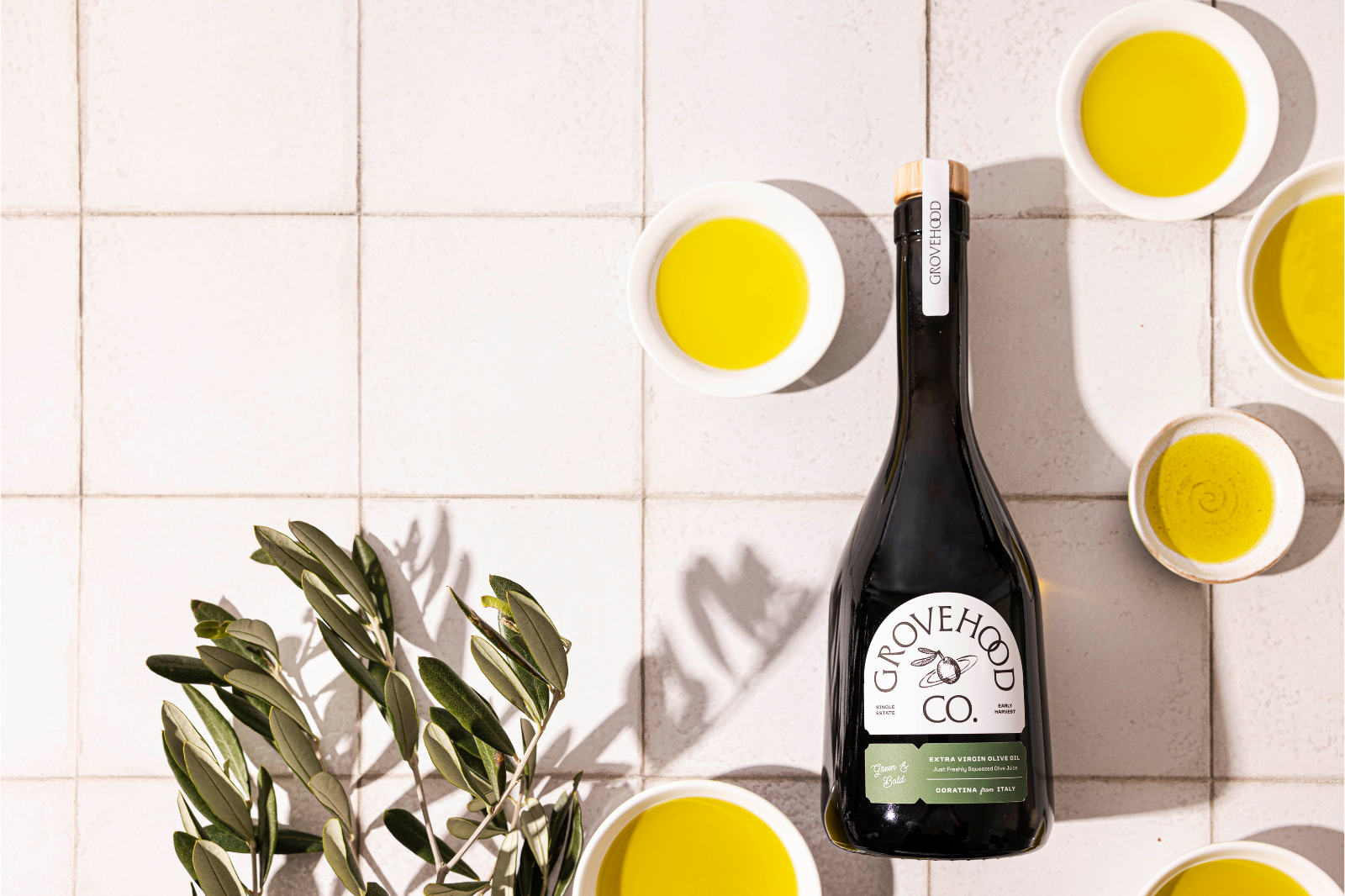
Olive Oil 101: What Is Olive Oil?
At Grovehood Collective, we want to create a space where all your olive oil questions are answered and information is shared transparently. We promise these won't be boring lectures. Since we love talking about olive oil, here is what we plan to have a chat about.
Understanding Olive Oil and Its Different Grades
Not all olive oils are produced in the same way. Their differences come down to quality and production methods. The best olive oil is carefully crafted to preserve its freshness, unique aromas by using only mechanical processes; without heat or chemicals. Lower-grade oils, on the other hand, undergo refining processes that involve chemicals to remove defects, eliminating not only flaws but also beneficial elements.

Think of It Like Fresh Juice—That’s Extra Virgin Olive Oil
Picture a juice press: you toss in whole oranges, and out comes fresh-squeezed juice. That’s essentially how extra virgin olive oil (EVOO) is made, except with olives (obviously). The olives go to the mill, get crushed, and their juice is extracted purely through mechanical processes. No heat. No chemicals. Just freshly pressed olive juice.
You might see terms like first-pressed, cold-pressed, or cold-extracted on labels. We surely explain them in detail but for now, what you need to know is that these are mostly redundant because all extra virgin olive oils are extracted/pressed cold, typically below 27°C (80.6°F). If it’s not, it’s probably not extra virgin anymore.
Sounds simple, right? Well, on paper yes, but in reality, it’s a bit more complex.
What Makes High-Quality Extra Virgin Olive Oil?
Producing high-quality EVOO requires meticulous attention to detail. If something goes wrong; maybe the olives weren’t in great condition, the process wasn’t carefully controlled, or the temperature during milling wasn’t managed properly; the oil may not qualify as extra virgin. Instead, it might be downgraded to virgin or even lampante oil.
So, Who Decides What’s Extra Virgin?
The International Olive Council (IOC) sets the most widely recognized standards for olive oil classification, though some countries have their own regulations. To qualify as extra virgin, olive oil must pass both chemical analysis (testing acidity, peroxide values, other chemical parameters) and sensory evaluation (checking for freshness, aroma, and taste).

Here’s how the different grades break down:
Extra Virgin Olive Oil (EVOO) – The Gold Standard
-
Freshly squeezed olive juice with no sensory defects.
-
No musty, fusty, or rancid flavors—only fresh, vibrant aromas and a balanced taste.
-
Chemically, it must meet strict parameters, including but not limited to acidity (below 0.8, but lower is always better!) and peroxide value (within limits and higher values indicating oxidation and degradation).
In short, EVOO is the best of the best—flavorful, healthy, and natural.
Virgin Olive Oil – A Step Down
-
Still natural olive juice, but with slight sensory defects.
-
Acidity can go up to 2%.
-
Not as flawless as EVOO, but still decent.
Lampante Olive Oil – Not for Eating
-
Historically used as lamp oil (hence the name).
-
Noticeable defects—off smells, rancid or unpleasant flavors.
-
Not suitable for direct consumption—it must be refined before use.
Other Types of Olive Oil? Here’s Where Chemicals Come In
Besides virgin olive oils, there are other grades—but these aren’t virgin oils because they’ve undergone chemical processing.
Pure Olive Oil / Olive Oil / Mild Olive Oil
-
A blend of refined olive oil with a small percentage of virgin or extra virgin olive oil (usually less than 10%).
Refined Olive Oil
-
Made with chemically refining lower-quality virgin olive oils.
-
Refining removes defects but also strips flavour and beneficial compounds.
-
Often blended with a small percentage of virgin or extra virgin olive oil for taste.
Olive-Pomace Oil
-
Extracted from the leftover olive pomace, basically second press or sometimes third press (the solid remains after pressing).
-
Obtained using solvents or other physical treatments.
-
Not considered a natural or virgin olive oil.

Why Should You Care?
Because not all olive oils are produced with the same care! Extra virgin olive oil isn’t just delicious; it’s the only olive oil that is 100% natural, comes with antioxidants, healthy fats, and polyphenols that are solely from the fruit itself.
Understanding labels helps you make better choices as a consumer (next time in the aisle read some bottles with different labels for visual understanding). Many claims on bottles can be misleading, and there’s a lot of misinformation out there.
The simple truth? Fresh is best. Always. (Mostly) In everything.
A high-quality extra virgin olive oil can be a game-changer. And since it’s just natural juice, it’s already superior to all other oils, including seed oil (which are mostly chemically processed anyway) that serve the same purpose.
Even though there are endless opinions on how to use olive oil, we follow the wisdom of our Mediterranean grandmothers - we use EVOO for literally everything, including beauty.
At Grovehood Collective, extra virgin olive oil is the only olive oil we care about. Because if there’s a natural juice available, why settle for anything else or less?
We curate only the finest EVOOs and recommend using them for everything; drizzling, sizzling, cooking, baking, dressing. We just don’t stop there, we also provide every detail - its origin, producer, harvest details and lab results - so you know exactly what makes it exceptional and extra.
